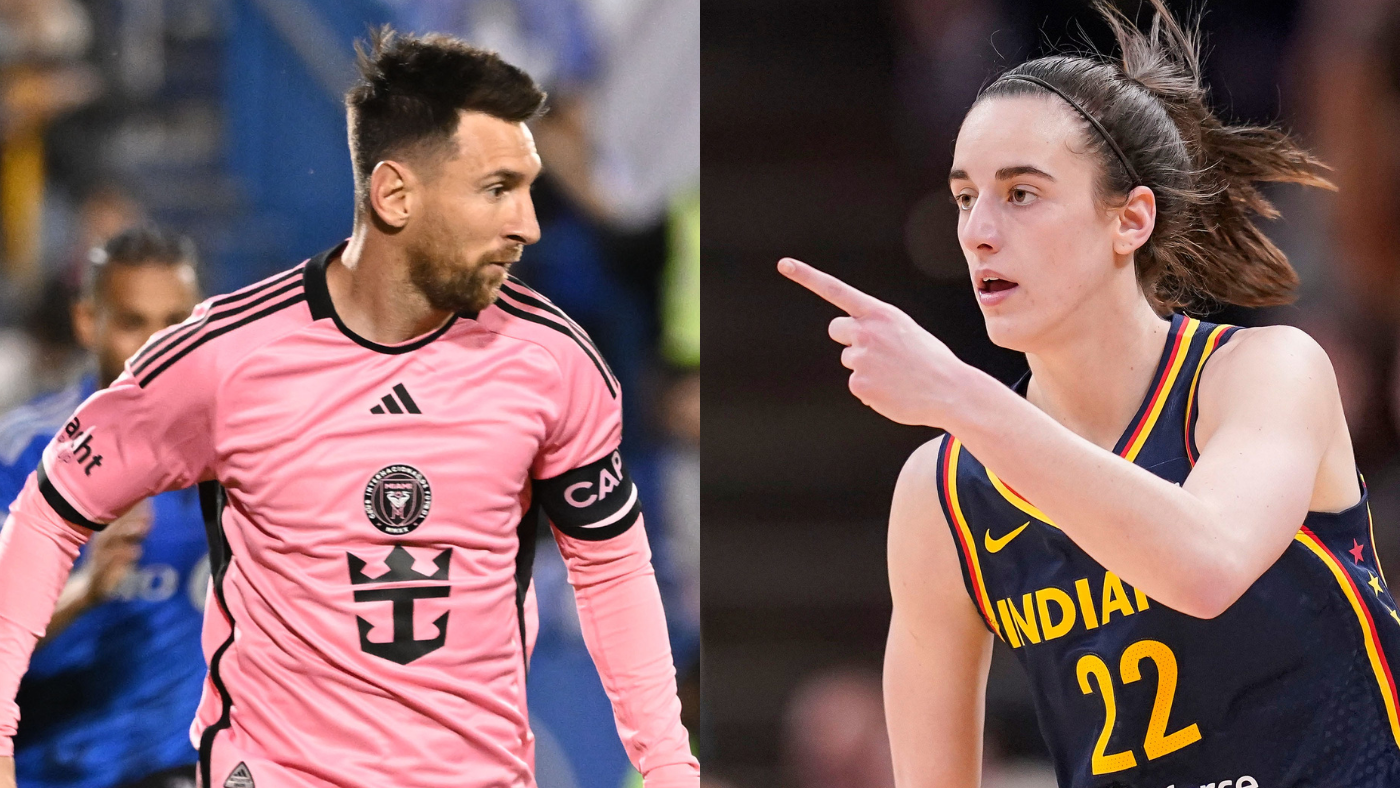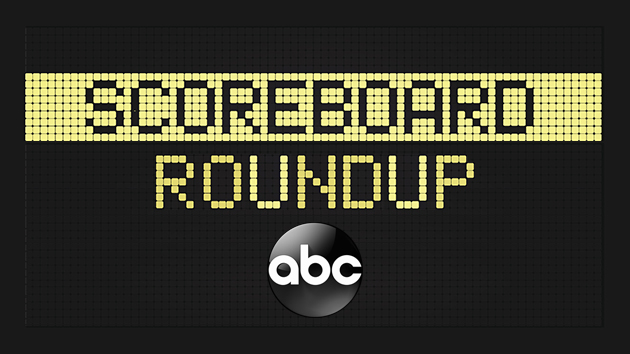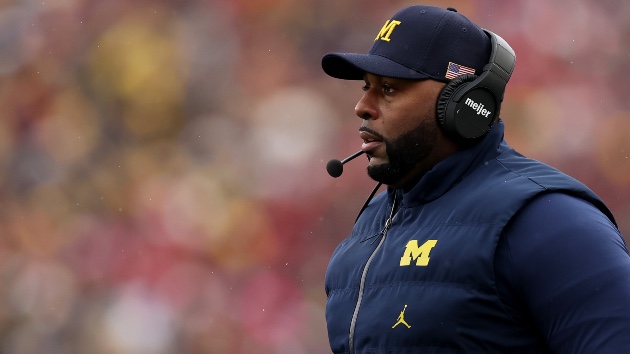As the WNBA’s Caitlin Clark era begins, what can the league can learn from Lionel Messi’s arrival in MLS
Written by CBS SPORTS ALL RIGHTS RESERVED on May 14, 2024


The American professional sports landscape is not short on stars, but within the last year alone, it inherited two potentially game-changing athletes in Lionel Messi and Caitlin Clark.
It may not be an obvious comparison at first, since Clark is a collegiate sensation who is about to begin her professional career with the WNBA’s Indiana Fever, while Messi has been soccer’s biggest star for the better part of two decades and is making one of his final career stops in MLS with Inter Miami. The Messi and Clark effects speak for themselves, though — both have driven more attention from fans and media to their respective new leagues, sponsorship and ticket revenue and carry the long-term hopes of those leagues on their shoulders.
Both Messi and Clark are being touted as transformational figures for MLS and the WNBA, two leagues who have been eager to carve a bigger spot for themselves in North America’s congested sports scene for nearly three decades. MLS played its first game in 1996, while the WNBA did so a year later and though the leagues’ growths have rarely correlated, they have fascinatingly landed at the same point at the same time — and may have lessons to learn from each other in the process as they hope the stars they place front and center leave long lasting impacts.
“What we talk about in the case of Caitlin Clark and Leo Messi, they’re not among the most popular athletes in their sport — they are, far and away, the most popular athletes in their sport,” said Scott Robson, the academic director of the sports management program at Columbia University. “As the transcendent athlete, you have the ability to really lift the entire sport and really bring it to another level of attention.”
By pressing sign up, I confirm that I have read and agree to the Terms of Use and acknowledge Paramount’s Privacy Policy.
Please check the opt-in box to acknowledge that you would like to subscribe.
Thanks for signing up!
Keep an eye on your inbox.
Sorry!
There was an error processing your subscription.
The Messi effect so far
Messi managed to puncture the busy news cycle last July when he signed with Inter Miami and has captured American audiences like few other soccer players have. Miami has obviously reaped the rewards of his arrival, becoming the third-most followed American sports team on social media and packing the stadium on home and away days. They are far from the only ones, though, who are enjoying strong returns early on in the Messi era.
MLS is enjoying more relevance on social media, according to data from the league. It added 5.4 million followers on social media ahead of December’s MLS Cup final — six times the increase they saw from 2022 — and most of them on TikTok and Instagram with 2.2 million and 2 million, respectively. Engagement on social media is up 200% for the 2024 season, while mentions of MLS clubs is up 15% and traffic on the league site grew 102% year over year.
League sponsorship revenue also jumped 17% this year while club sponsorship revenue rose 15% and MLS Canada’s grew 44%. For individual clubs, 24 of MLS’ 29 teams said they were ahead of pace on season ticket sales before the 2024 season compared to a year earlier, with season ticket revenue up 25%. Time will ultimately tell if the Messi experience catapults MLS to new levels of popularity, but these are strong early returns that allow clubs to sell audiences on the in-stadium experience — D.C. United, for example, estimates that 60% of people who attend a match are likely to return, per Sportico.
Messi’s arrival is also inextricably linked with MLS’ 10-year broadcast agreement with Apple, which kicked off last year. The streamer has a near-exclusive global deal to air games, a first for Apple and an unique bet for a league of MLS’ stature on one of its main revenue streams. The deal now includes a revenue-sharing element with Messi, who makes an unprecedented agreement like this worth paying attention to. The streamer experienced an immediate effect upon Messi’s arrival, with more than 110,000 people subscribed to MLS Season Pass on Apple TV+ ahead of his first game.
Again, there are early signs of positivity but as far as key performance indicators go during MLS’ Messi era, the Apple deal remains a big question mark since it’s the first-of-its-kind. Neither the league nor Apple regularly release viewership or subscriber figures, which means it is still hard to gauge whether this new, mostly-paywalled element of the Messi experience has delivered new fans for MLS.
“In order to continue to build on the momentum in both of these leagues with both of these star players, there’s going to have to be a solid plan that can be sustainable and one of the things that’s needed is a widespread general populous distribution of it,” Ketra Armstrong, a professor of sports management at the University of Michigan said. “If you have to pay to go to certain places, only the diehard fans, more than likely, are going to be willing to relinquish their resources to do so. In order to bring more eyeballs, I just think they need a more national broadcast on a more regular basis.”
And for more WNBA, don’t miss out on games and coverage all season long across CBS, CBS Sports Network, and Pararmount+ from Tuesdays kickoff right through until the finals.
Lessons for the WNBA
Clark’s arrival in the WNBA is expected to inspire a similar immediate response as Messi’s in MLS, chief among them the packed stadiums for the Fever’s home and away games — the Connecticut Sun have already sold out their home opener against Clark’s new team. Viewership figures could also jump if the figures from this year’s WNBA Draft, which averaged 2.45 million viewers on ESPN, is anything to go by. Those figures are also expected to be much more readily available than MLS’ on Apple, considering the WNBA is chiefly partnered with more traditional media companies like Disney, CBS and Scripps.
The new Fever recruit also arrives at an opportune time for the WNBA. The league is seeking a new broadcast deal starting in the 2026 season, giving it time to prove its worth during the early years of Clark’s professional career while adding more games to the schedule through expansion. Their current deal, which also includes games on Amazon Prime Video, is worth around $60 million a year, per Front Office Sports, but the WNBA eyes something in the range of $80 to $100 million annually. It would mark a record-setting number for a women’s sports league, but Clark’s appeal could allow the WNBA to separate itself from the joint negotiations it is currently holding with the NBA.
“The issue for the WNBA is, can Caitlin Clark have that sort of impact on their media deal,” Robson said. “It’s certainly a substantial increase in its value whether it’s combined with the NBA deal or not.”
While a notable increase in broadcast revenue seems like it’s on its way for the WNBA, the league has plenty of ground to make up when comparing it to MLS. It lags behind MLS in terms of sponsorship revenue, number of teams and valuations — the Seattle Storm are the WNBA’s most valuable team at $151 million, per Fast Company, well below the average MLS team valuation of $678 million, per Sportico.
There are several reasons to explain the discrepancy, but chief among them is the historic devaluation of women’s sports.
“There’s a lot of room to grow for the WNBA and they still have a ways to go to catch up with MLS and look, MLS is a male sport so the obvious answer, first and foremost,” Robson said.
It’s early days, but the WNBA might already be making some headway as it pertains to corporate partners — the Phoenix Mercury just landed a multiyear jersey patch sponsorship with Cleveland Avenue reportedly worth $3 million annually, the highest figure in the league, per Sportico. The deal might not be attributable to the Clark effect, which is perhaps a bigger vote of confidence in the WNBA’s appeal than something directly related to one person.
That perhaps serves as a cautionary tale of sorts for both MLS and the WNBA. Some have criticized a singular focus on Messi and Clark by the leagues and the ecosystems that support them, at times possibly failing to strike the balance of capitalizing on a sports star while highlighting other deserving talents. Having Clark share the spotlight with other athletes could be a strength for the WNBA, which welcomed a high-profile draft class this year that included two women who beat Clark’s Iowa Hawkeyes in the last two NCAA championship games — Angel Reese of LSU in 2023 and Kamilla Cardoso of South Carolina just last month. And those are just the rookies. The league is already home to most of the world’s top basketball players including A’ja Wilson, who just inked a signature shoe deal with Nike, and Breanna Stewart. It might also be crucial during Clark’s first years in the league, since it’s unclear how quickly she can jump from being the best in college basketball to a star in the professional game.
“There’s certainly a cadre of young athletes in the league who are coming in with a lot of name recognition who, as a cohort, I think are really, really important to the future of the WNBA,” Robson said. “Now, the nice part — and the hopeful part, realistically — is that if the wave of popularity of women’s sports continues.”
The same is not true for MLS, which does have a list of recognizable stars including Messi’s teammate Luis Suarez, but many of them are international imports who are making brief stops in the league. MLS cannot traditionally sell itself as the top destination in its sports, unlike most of the other American sports leagues, which makes the balance harder to strike.
“The WNBA is the destination league for elite women’s basketball and MLS — I think it’s changing, but I think it’s still growing. It’s still in a growth phase,” Armstrong said. “When Messi came, it was a different layer of legitimation. If one of the best players in the world would go to MLS, I think that added an element, a different layer of justification and legitimacy to the league. When you compare it to the European leagues and the other leagues around the world, it isn’t there yet. It doesn’t mean that that it can’t maximize the market space that it occupies.”
A focus on just one star is usually a calculated risk, and perhaps a necessary one for MLS and the WNBA as they chart exponential growth. The most sustainable strategy, though, will require each league to leave room for other stars to shine, too.
“You’re always trying to grow the next athlete because if you’re not, when that athlete ultimately leaves the league, you’re going to have a hangover effect,” Robson said. “We saw it in the NHL when [Wayne] Gretzky left, we saw it in the NBA after [Michael] Jordan left. There’s always going to be a next great athlete but it typically doesn’t happen right away so you want to make sure you’re continuing to grooming the next generation of stars, even while you’re selling and focusing on your keystone athlete.”
The post As the WNBA’s Caitlin Clark era begins, what can the league can learn from Lionel Messi’s arrival in MLS first appeared on CBS Sports.






